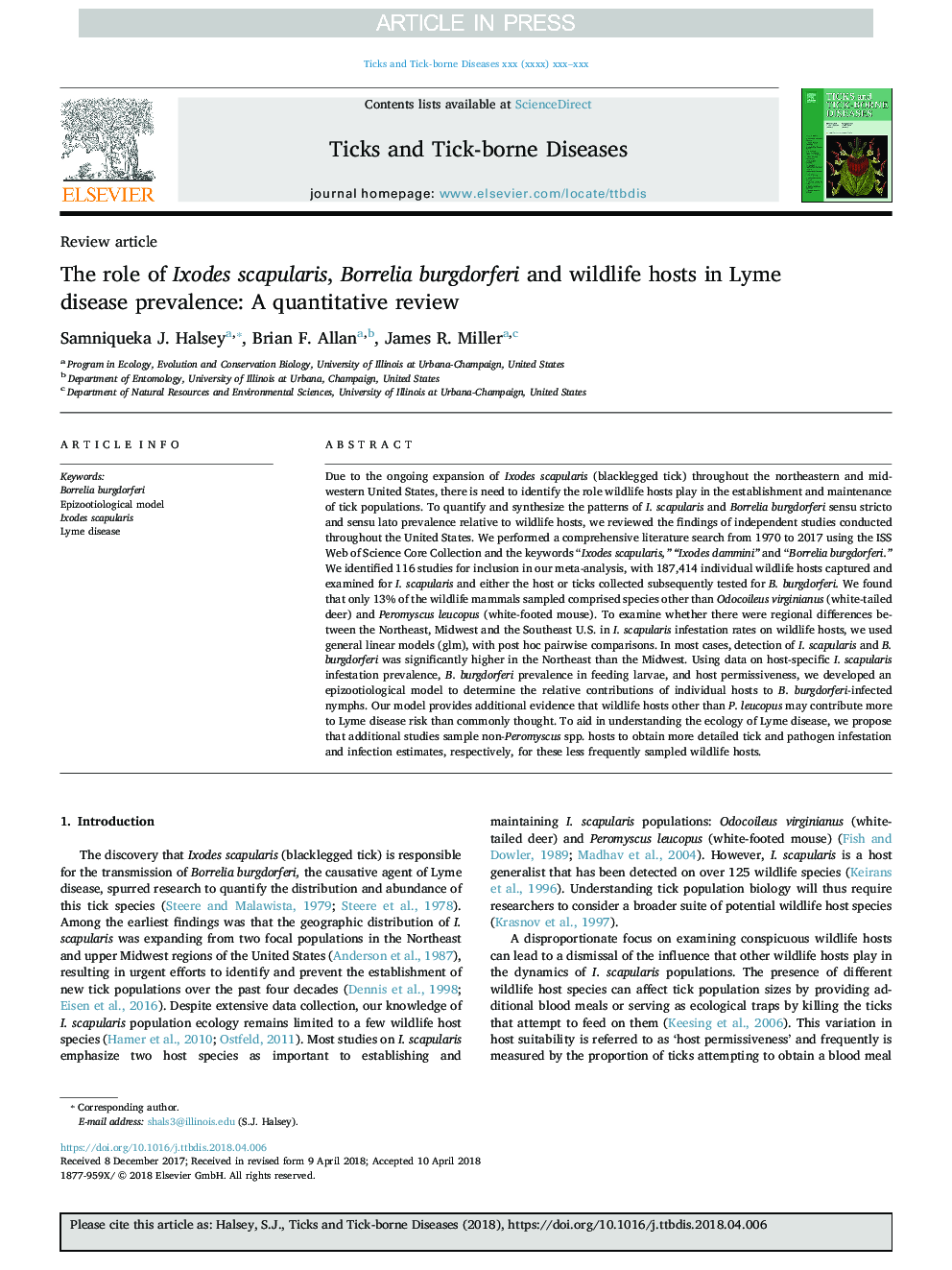| Article ID | Journal | Published Year | Pages | File Type |
|---|---|---|---|---|
| 8506984 | Ticks and Tick-borne Diseases | 2018 | 12 Pages |
Abstract
Due to the ongoing expansion of Ixodes scapularis (blacklegged tick) throughout the northeastern and midwestern United States, there is need to identify the role wildlife hosts play in the establishment and maintenance of tick populations. To quantify and synthesize the patterns of I. scapularis and Borrelia burgdorferi sensu stricto and sensu lato prevalence relative to wildlife hosts, we reviewed the findings of independent studies conducted throughout the United States. We performed a comprehensive literature search from 1970 to 2017 using the ISS Web of Science Core Collection and the keywords “Ixodes scapularis,” “Ixodes dammini” and “Borrelia burgdorferi.” We identified 116 studies for inclusion in our meta-analysis, with 187,414 individual wildlife hosts captured and examined for I. scapularis and either the host or ticks collected subsequently tested for B. burgdorferi. We found that only 13% of the wildlife mammals sampled comprised species other than Odocoileus virginianus (white-tailed deer) and Peromyscus leucopus (white-footed mouse). To examine whether there were regional differences between the Northeast, Midwest and the Southeast U.S. in I. scapularis infestation rates on wildlife hosts, we used general linear models (glm), with post hoc pairwise comparisons. In most cases, detection of I. scapularis and B. burgdorferi was significantly higher in the Northeast than the Midwest. Using data on host-specific I. scapularis infestation prevalence, B. burgdorferi prevalence in feeding larvae, and host permissiveness, we developed an epizootiological model to determine the relative contributions of individual hosts to B. burgdorferi-infected nymphs. Our model provides additional evidence that wildlife hosts other than P. leucopus may contribute more to Lyme disease risk than commonly thought. To aid in understanding the ecology of Lyme disease, we propose that additional studies sample non-Peromyscus spp. hosts to obtain more detailed tick and pathogen infestation and infection estimates, respectively, for these less frequently sampled wildlife hosts.
Related Topics
Life Sciences
Agricultural and Biological Sciences
Animal Science and Zoology
Authors
Samniqueka J. Halsey, Brian F. Allan, James R. Miller,
